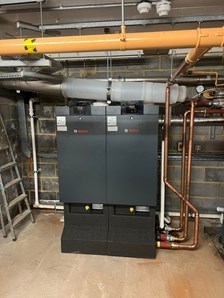
Why Schools Must Upgrade Their Heating Systems To Increase Energy Efficiency
Published by : Deanne Pettifer on 07 June 2023
As schools welcome thousands of students, there are a lot of factors responsible for creating a comfortable environment that is conducive to learning. One such critical aspect of a school is its heating system. Unfortunately, many schools have neglected the importance of upgrading their heating systems, and it's costing them a fortune. In this blog post, we'll explore why schools must upgrade their old heating systems to newer energy-efficient options.
1. Save Money on Energy Bills: This is one of the most significant reasons why schools must shift to energy-efficient heating systems. Traditional heating systems consume a lot of energy, leading to steep energy bills. Upgrading to energy-efficient options will reduce the consumption of energy, thereby reducing costs. Also, energy-efficient systems have features such as programmable settings, which allow you to control when and how the heating system works, thereby reducing energy consumption.
2. Reduced Carbon Footprint: With the rise of climate change, it's essential that we all take steps towards reducing our carbon footprint. Schools too can do their part by switching to energy-efficient heating systems. These systems are designed to consume less energy, thereby reducing the amount of heat-trapping greenhouse gases released into the environment.
3. Improved Air Quality: Older heating systems can lead to poor air quality in schools. This can lead to respiratory problems for students and staff members. Energy-efficient heating systems have filters that can trap dust, allergens, and other pollutants, ensuring that the air is cleaner and fresher.
4. Increased Comfort: Traditional heating systems are known to create hot and cold spots around the school. Energy-efficient systems, on the other hand, work more efficiently, ensuring that the temperature is uniform throughout the school. This improves the overall comfort and ensures that students and staff can focus on learning instead of being distracted by temperature fluctuations.
5. Better Functionality: Older systems may have frequent breakdowns, leading to loss of heating during critical times. Energy-efficient heating systems, on the other hand, are designed to work optimally, reducing the likelihood of breakdowns and ensuring that the system works when needed.
Conclusion:
As schools gear up for a new academic year, upgrading heating systems to energy-efficient options must be a top priority. With the benefits of cost-effectiveness, reduced carbon footprint, improved air quality, increased comfort, and better functionality, there's every reason why schools must switch to newer energy-efficient heating systems. As Facility managers and caretakers, it's up to you to take the lead and make this transition as it is an investment in the future of our children and the environment.